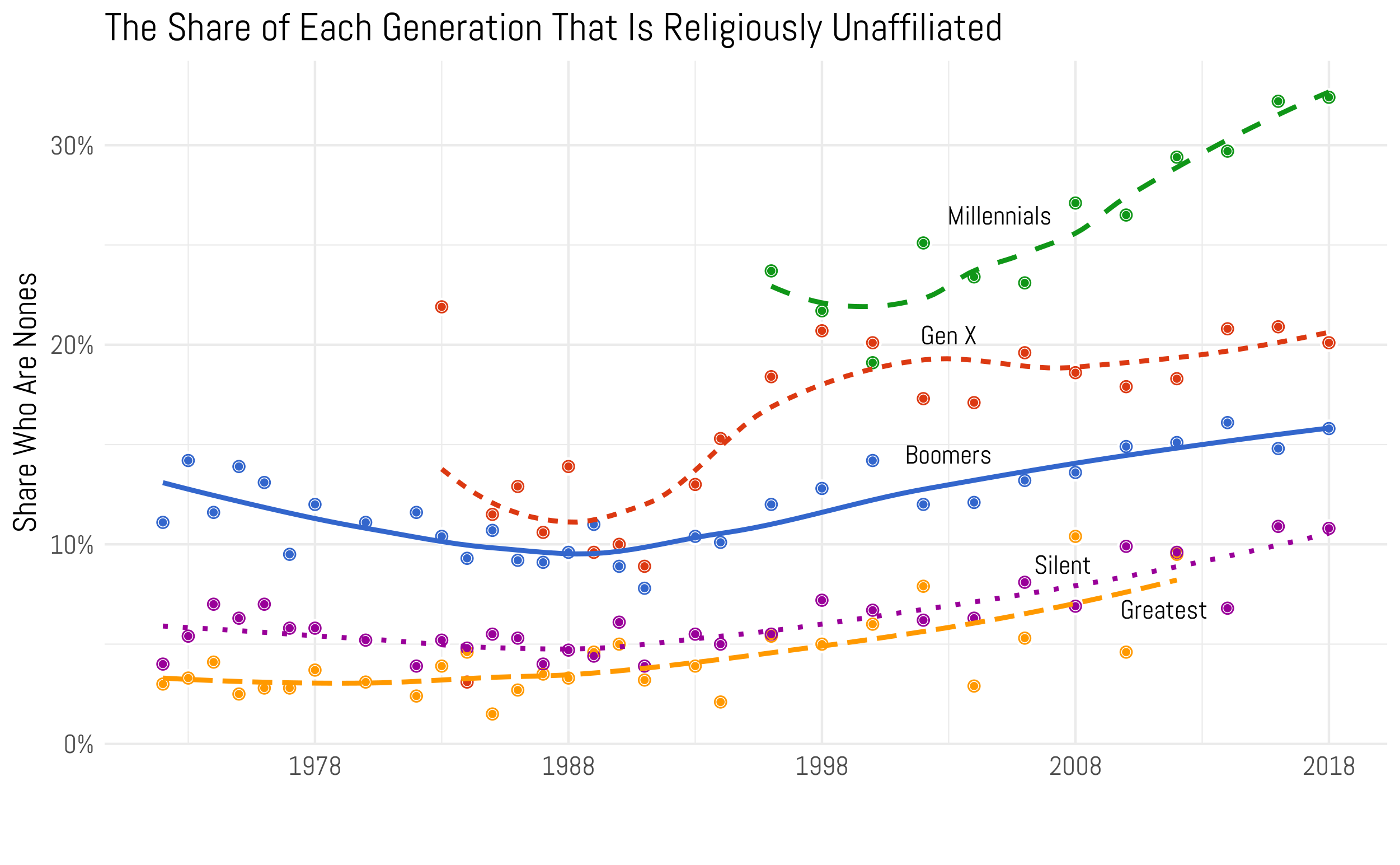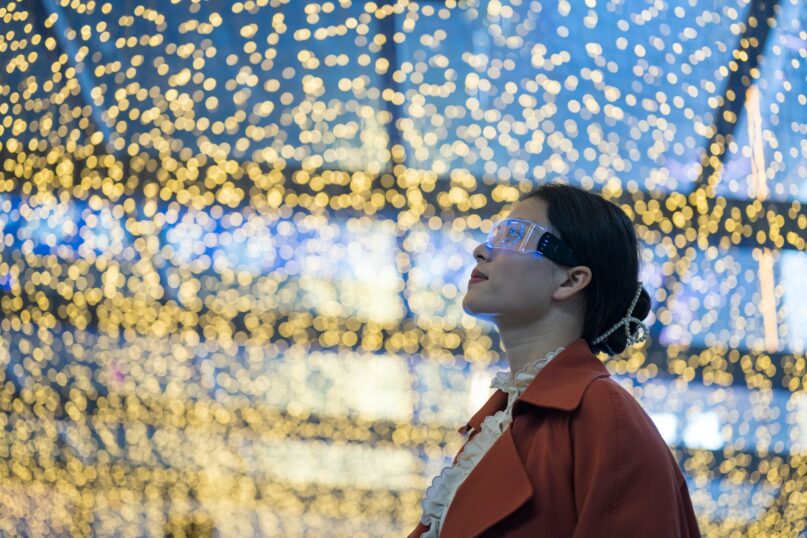(RNS) — What’s the future of religion in America?
The big story of the past couple of decades is, of course, the rise of the nones — the burgeoning proportion of Americans who, when asked, “What is your religion, if any?” answer, “None.”
Thirty years ago less than 10% of respondents in surveys gave that answer. Today nearly one-third do.
It’s often pointed out that many nones believe in God, pray and even attend worship services. So being a none doesn’t necessarily mean you’re irreligious. That’s why some survey researchers eschew the term “nones” in favor of “unaffiliated.”
Regardless of terminology, a critical but little recognized explanation for the growth of this segment of the population is a shift in how we understand religious identity.
A generation ago, if you asked the religion of an American who didn’t go to church, a typical response would be something like, “Well, my parents raised me Methodist so put me down as Methodist.” Today the response is more likely to be, “My parents raised me Methodist but I don’t go to church. Put me down as none.”
In other words, Americans used to consider their religious identity as ascribed to them by their family of origin. Now, increasingly, it’s what they choose to be or not to be at the present time.
No doubt America has seen a decline in religious participation in recent years. To be sure, the increase in the proportion of nones overstates the extent of the decline because of the shift in our understanding of religious identity from ascribed to chosen. Nevertheless, the shift has degraded the residual religious identification that, for example, leads nonchurchgoing parents to send their children to “their” religion’s Sunday school.

Religious disaffiliation has risen in every generation, including even older Americans, though the sharpest spike in nones is occurring with the millennials.
Most importantly, the valorization of choice has favored those religious traditions that make choice a criterion for membership. In evangelical Protestantism, for example, you’ve got to make a choice for Jesus no matter how many evangelical forebears you have.
By contrast, Judaism is preeminently a religion of ascribed identity — for the past 2,000 years determined by matrilineal descent. God may have chosen the Jews, but “Jews by choice” is a phrase reserved for converts.
“The Future of Judaism in America,” a just-published volume I co-edited with Jerome Chanes, looks at the different ways this multifarious tradition is adapting — and failing to adapt — to the new regime of choice in American religion.
Among the Orthodox haredim, the approach has generally been to make it harder for members to choose to leave by limiting their contacts with and their ability to function in the outside world. The Chabad-Lubavitch sect, however, has dedicated itself to getting nonobservant Jews to choose to participate in its religious activities.
Reform Judaism, the most liberal of the denominational streams, has adapted to choice by lowering the barriers to entry. It now recognizes Jewish identity by patrilineal descent, enables non-Jewish spouses to belong to congregations and no longer frowns on traditional practices such as the wearing of skullcaps and prayer shawls.
Numerically, both the Orthodox and the Reform have held their own. Conservative Judaism, occupying a middle ground between the two, has struggled. Once the largest of the denominational streams, it now holds the allegiance of just 17% of the Jewish population, as compared with 27% who consider themselves Jews of no religion — the Jewish nones.
Like it or not, the regime of choice is here to stay, posing distinct challenges to all American religious communities. How well they adapt will determine the future of religion in America.
Thus far, it’s fair to say that they’re not adapting very well.






